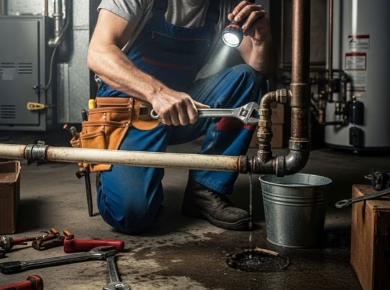When it comes to Tools Investment for your home or work, you likely face the big question of where to spend more and where to be frugal. You quickly learn that a cheap drill might not be up to the job for your weekend tasks. Having advised many clients on their tool purchases, here’s what truly works to find the right mix of quality and price.
Core Needs of Your Projects
The first step in deciding where to splurge or save is to understand your specific needs. Are you a weekend warrior taking on DIY home improvements, or a professional contractor relying on your tools every day? Each scenario requires a different approach to your tool investment.
Assessing Your Usage
Consider how often you’ll use the tools. For instance, if you’re only going to use a table saw once or twice a year, splurging on a high-end model might not make sense. Conversely, if you’re a professional carpenter, investing in a top-tier machine could pay off in efficiency and durability.
Prioritizing Tool Categories
Some tools are essential for quality work, while others can be more forgiving in terms of performance. Here’s a breakdown of which categories typically warrant a splurge versus a save:
- Power Tools: Always opt for reputable brands here. A reliable drill or circular saw can make the difference between a smooth project and a frustrating one.
- Hand Tools: In many cases, you can save on hand tools. A good-quality hammer or screwdriver doesn’t have to break the bank to perform adequately.
- Specialty Tools: If you need a specific tool for a unique project, renting or buying an affordable version is often the best choice.
Where to Splurge: Essential Investments
Let’s dive into specific tools and categories where spending a bit more can yield significant benefits.
Power Tools: The Heart of Your Toolkit
When it comes to power tools, quality significantly impacts performance and longevity. Brands like DeWalt, Makita, and Bosch are often worth the investment.
For example, a high-quality cordless drill can cost anywhere from $150 to $300, but it will last for years and provide consistent power. In contrast, a cheaper drill may save you money upfront but can lead to frustration and potentially costly mistakes on the job site.
Safety Gear: Protecting Your Investment
Don’t skimp on safety gear. Quality safety glasses, ear protection, and work gloves are non-negotiable. Investing in high-quality safety equipment can prevent injuries and ultimately save you money on medical bills.
High-End Measuring Tools
Precision is key in any project, and investing in a reliable laser level or digital measuring tape can ensure accuracy. These tools often come with features that simplify complex tasks, making them worth the extra expense.
Where to Save: Smart Choices for Budget-Conscious Shoppers
While some tools deserve your hard-earned cash, others can be found at lower price points without sacrificing quality.
Hand Tools: Affordable Yet Effective
Most hand tools—like wrenches, pliers, and screwdrivers—can be found at budget-friendly prices without losing functionality. Brands such as Craftsman and Stanley offer solid, reliable options that will serve you well without straining your budget.
Basic Cordless Tools
If you’re just getting started, consider purchasing basic cordless tools. Many manufacturers offer entry-level options that perform adequately for light-duty tasks. These tools can often be found for under $100, making them accessible for beginners.
Rental Options for Specialty Tools
For tools you’ll only use occasionally, like concrete mixers or large saws, consider renting instead of buying. Many local hardware stores offer rental services, allowing you to access high-quality equipment without the commitment of a purchase.
How to Fix Budget Frustrations in Tool Investment
Here’s exactly how to navigate your tool investments without overspending or sacrificing quality:
Step 1: Create a Project List
Begin by making a list of projects you plan to tackle. This will help you determine which tools are essential and which ones can be borrowed or rented.
Step 2: Research and Compare
For each tool on your list, do thorough research. Read reviews, watch comparison videos, and check ratings. Websites like Consumer Reports and forums dedicated to DIY projects can provide valuable insights.
Step 3: Set a Budget
Decide how much you’re willing to spend on tools and stick to that budget. Allocate more of your budget to splurge-worthy items and be prepared to save on less critical tools.
Step 4: Purchase Wisely
When you find a tool you want, check multiple retailers. Websites like Amazon often have competitive pricing, but local stores might offer discounts or bundles that provide better value.
Never Do This with Your Tools—Here’s Why
Never purchase tools solely based on price. This can lead you to buy low-quality items that break down easily, ultimately costing you more in the long run. It’s essential to balance cost with quality—especially for tools that you’ll rely on heavily.
Staying Current: Trends in Tool Investments
As technology evolves, so do the tools available on the market. This year, we’re seeing a shift towards more versatile and battery-powered tools. For instance, multi-tools that can switch between functions are becoming increasingly popular, saving space in your workshop and money in your budget.
Additionally, with the rise in eco-conscious consumerism, many brands are now offering tools made from sustainable materials, which could be a great investment for those looking to reduce their environmental impact.
Keeping Up with Prices
Prices can vary significantly based on trends, seasons, and even brand promotions. For instance, many manufacturers release discounts in January or during major shopping holidays like Black Friday. Keeping an eye on these trends can help you snag high-quality tools at a fraction of the price.
Final Thoughts: Craft Your Ideal Toolkit
Investing in tools is a balancing act between quality and cost. By understanding your needs, prioritizing your purchases wisely, and staying informed about market trends, you can create a toolkit that serves your projects well without breaking the bank.
Remember, the best tools are those that empower you to complete your projects efficiently and safely. So take the time to research and invest wisely—your future self will thank you for it!



